Discover the art and science of smoking frozen meat, delving into the techniques that assure a flavor-filled, tender result every time.
Smoking frozen meat can be a challenging task without the right knowledge, but with the correct steps, you can achieve flavorful results. This article provides a comprehensive guide on how to smoke frozen meat effectively, covering everything from thawing techniques to the actual smoking process.
You’ll learn the importance of slow thawing, the ideal temperature for smoking, and tips on how to infuse your frozen meat with a rich, smoky flavor. Stick around to discover the details of this process, ensuring your smoked meat turns out juicy, tender, and delicious every time.
Key takeaways:
- Slow thawing* and maintaining proper smoking temperature is key.
- Rotate meat as needed* to ensure even smoking.
- Choose the right wood* for different types of meat.
- Use a water pan* in the smoker to prevent drying out.
- Thaw meat properly* before smoking to preserve texture and flavor.
Smoking Meat Directly From Frozen
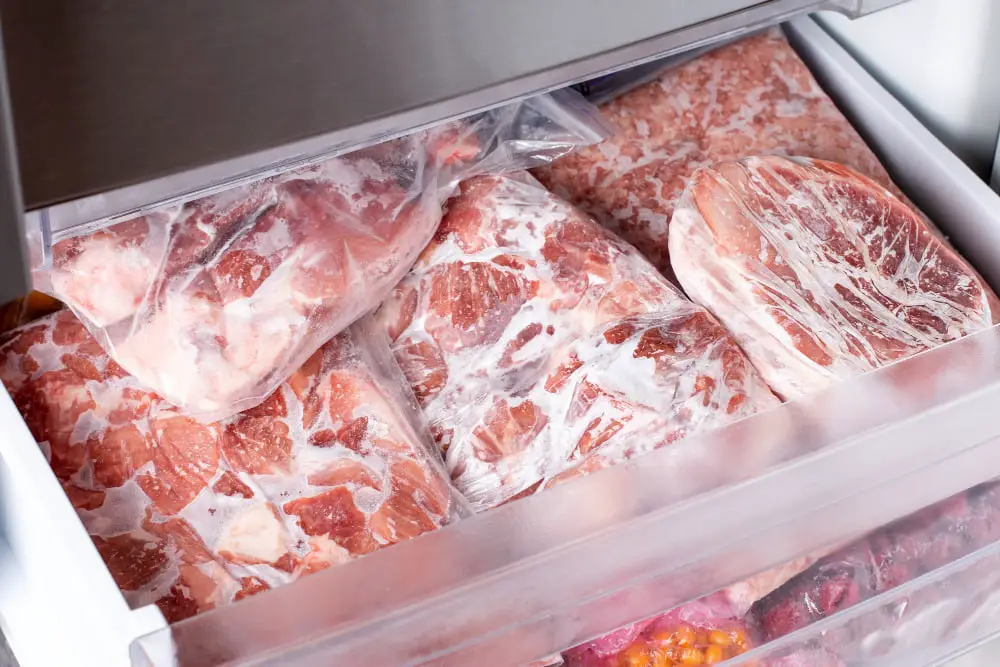
Place the frozen meat on the smoking grates and ensure the temperature remains between 225 and 250 degrees Fahrenheit. Longer cooking time will be necessary, initially set for at least 1.5 times that of fresh meat. Regularly checking internal temperature with a meat thermometer is essential. Aim for the recommended internal temperature based on meat type.
It’s important to avoid having the smoker’s temperature too high to evade the risk of the outer layers of the meat being overcooked while the inside remains frozen. The presence of ice crystals in frozen meat can lead to uneven heat distribution, hence adherence to the recommended smoking temperature is key.
Rotate the meat only if necessary, to ensure even smoking. Bear in mind, each time the smoker is opened, heat gets lost prolonging the cooking time.
Remember, hickory and oak wood chips are a safe bet for most types of meat, as they give a strong yet not overpowering flavor. However, the choice of wood differs depending on the type of meat. For example, poultry favors milder wood flavors like apple or cherry.
Maintain a water pan inside your smoker to ensure the meat doesn’t dry out during the extended cooking time. Top it up as required to maintain the moisture level.
Again, patience is required when smoking frozen meat. It takes time for the smoke to penetrate the frozen mass and infuse the flavor throughout. While the extension in cooking time can be a downside, the slow, controlled thaw and cook process can result in a tender, flavorful result with a classic smoky crust.
Thawing Meat From Frozen Before Smoking
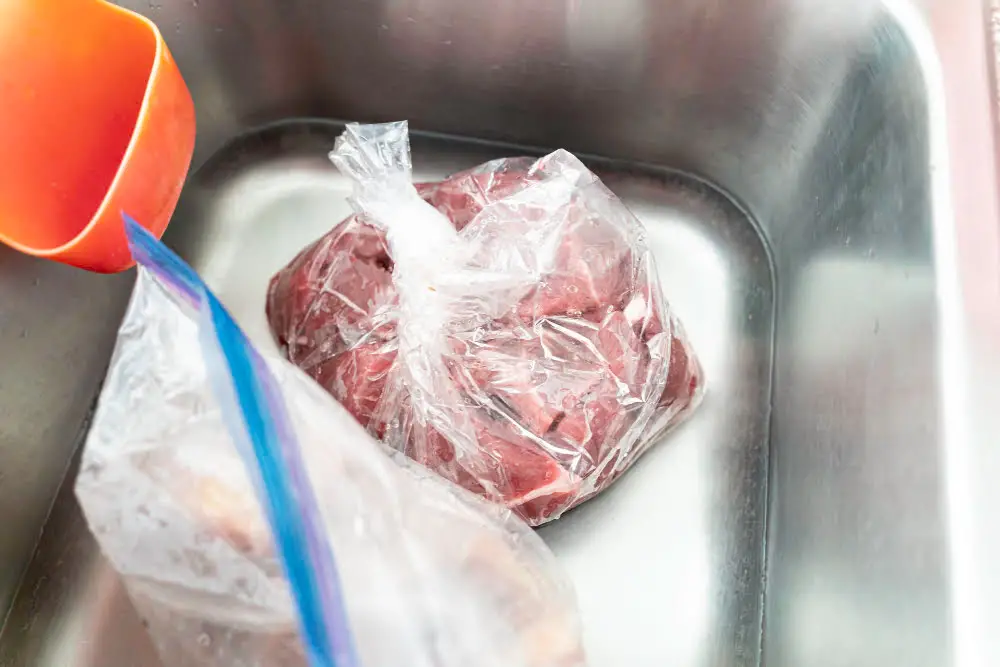
Safe thawing of frozen meat is pivotal in maintaining the quality of texture and flavor when smoking it. First, always choose the refrigerator for thawing. This slow and steady method ensures even defrosting while keeping the meat in a safe temperature zone to prevent bacterial growth. Patience is key – allow a full 24 hours of thawing for every five pounds of meat.
Avoid thawing at room temperature or using hot water, as these methods can leave the outer portions of the meat in a temperature zone where bacteria can grow rapidly. Never smoke meat that has been improperly thawed, as it risks not only your health but also the quality of the final product.
For a quicker thawing method, a cold water bath can be used. Ensure the meat is well sealed in a waterproof bag, then submerge it in cold water. This method requires diligence – refresh the water every 30 minutes to maintain the cold temperature.
Once thawed, dry the meat using paper towels to remove excess moisture. It aids in achieving better smoke adherence, enhancing the flavor of your smoked meat.
Remember, pressure thawing and microwave thawing are not recommended due to the uneven defrosting which can impact the texture of the meat negatively. Also, thawed meat should not be refrozen as it can degrade the texture and flavor.
Meat Science in Context of Frozen and Smoked Meats
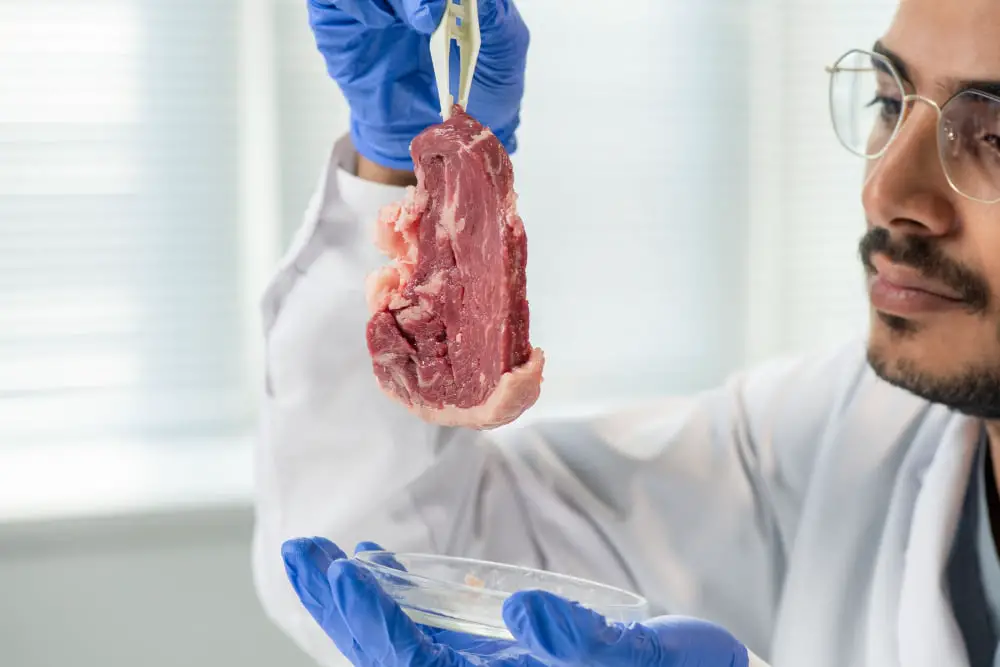
In understanding meat science, it’s essential to be aware that freezing alters the meat’s cell structure. Once meat freezes, ice crystals form and rupture the cell membranes, which could potentially lead to a dryer piece of meat when cooked.
When you smoke frozen meat, you have a longer window between when the meat reaches the danger zone temperature (between 40°F and 140°F), where bacteria growth is rapid, and when it starts to cook. This could lead to negative impacts on the texture and taste of the meat.
The fat within the meat also doesn’t render as well from frozen, which affects the overall taste and texture. It could lead to a greasier end product, as the fat doesn’t properly cook out.
Additionally, it’s important to note that the smoking process itself takes longer with frozen meat, as the meat needs to thaw before it can properly cook.
It’s recommended to properly thaw your meat in the refrigerator ahead of time before smoking to avoid these issues. Depending on the size and cut of your meat, this could take anywhere from a couple of hours to multiple days.
Finally, semi-frozen meat can be a good compromise between fresh and frozen. This gives you a slightly longer smoking process for more smoke flavor, but the meat thaws out fairly quickly so you don’t have the same issues with the danger zone temperatures and fat rendering as you do with fully frozen meat.
Freezing Methods to Maximize Flavor During Smoking
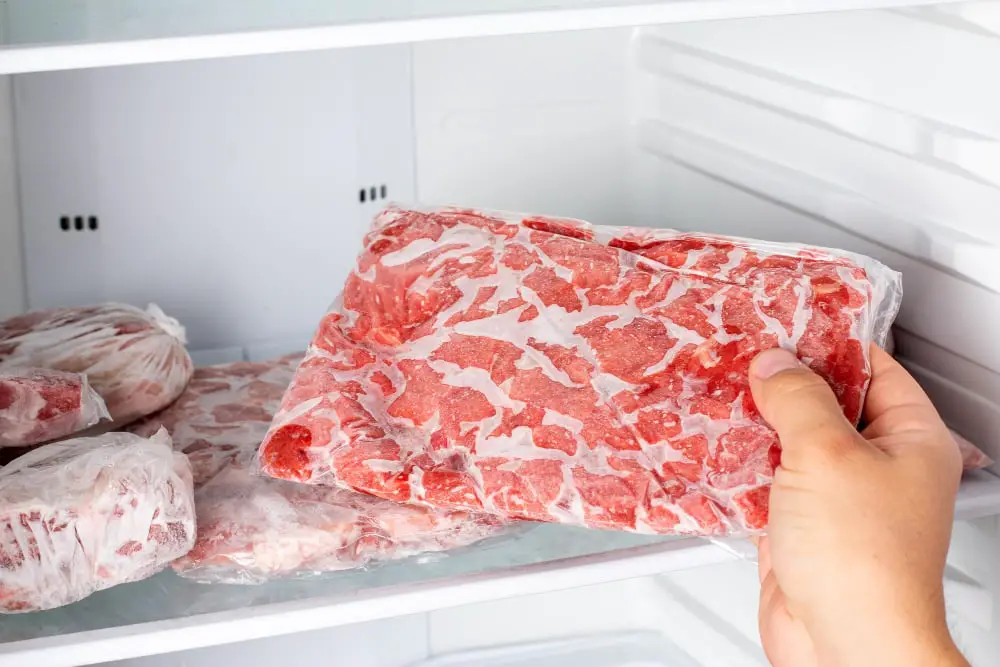
Two main freezing approaches cater to flavor maximization during smoking – quick freeze and slow freeze.
Quick freeze, also known as flash freezing, involves bringing down the temperature of the meat rapidly to below freezing. The chief benefit of quick freeze is the minimal formation of large ice crystals, which helps in preserving the texture of the meat, leading to an enhanced smoking experience.
Slow freeze, on the other hand, is a more traditional method where the temperature of the meat gradually decreases to reach the freezing point. Though slower, this method allows for a more profound marination process as the meat absorbs more flavors during the prolonged freezing process.
Vacuum sealing before freezing the meat is another notable method. This cutting-edge technique eliminates air from the packaging, preventing freezer burn and preserving the meat’s natural juices, thus improving flavor during smoking.
Remember, regardless of the method chosen, it’s crucial to plan your meal ahead of time. The freezing process may require a few hours to a couple of days, based on the size and type of the meat. Optimal planning and preparation can help ensure that your smoking process yields the best flavor.
Flash Freezing and Its Impact On Smoking
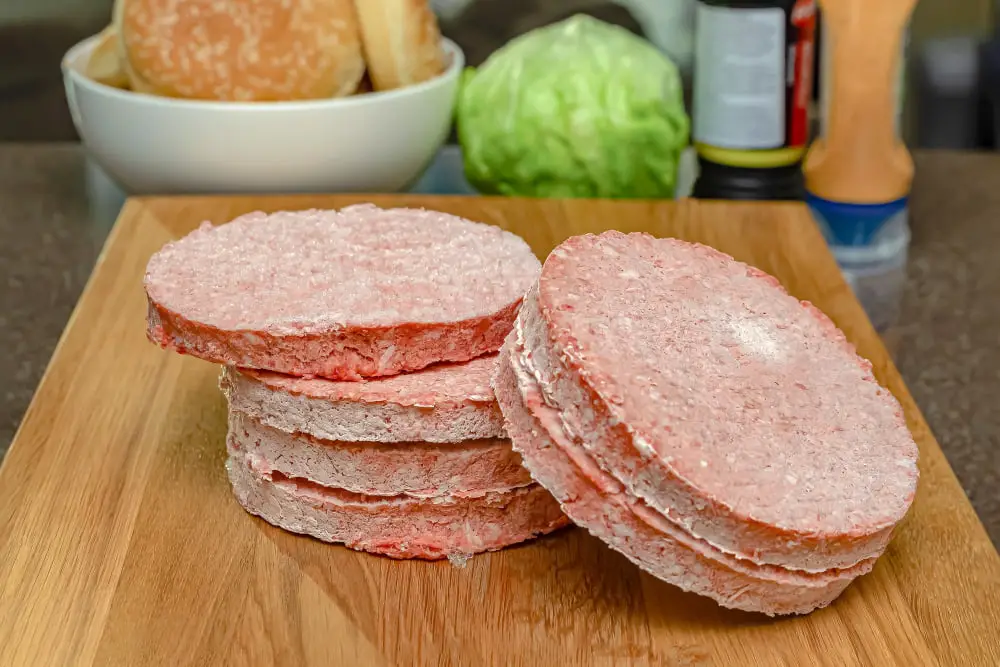
Flash freezing, a method where products are rapidly frozen at extremely low temperatures, significantly influences the smoking process. The method preserves the meat’s cellular structure, which can enhance the smoke absorption and flavor retention during smoking.
The impact of flash freezing on smoking includes:
- Preserving Quality: Quick freezing helps maintain the meat’s quality, reducing the likelihood of moisture loss during thawing, which can often dilute flavor.
- Improved Smoke Absorption: The intact cellular structure makes the meat more receptive to smoke penetration.
- Enhanced Flavor Retention: The well-preserved fibers in flash-frozen meat hold onto the smoky flavor better, resulting in a more flavorful end product.
- Extended Shelf Life: Flash freezing extends the meat’s shelf life without undermining its smoking potential.
Before smoking the flash-frozen meat, it’s crucial to thaw it correctly. For best results, thaw in the refrigerator, which can take a day or more depending on the meat size. This slow process minimizes texture and flavor change while ensuring it’s safe to consume.
Applying smoke to the meat is the final stage. Note that flash-frozen meat might take longer to reach the optimal internal temperature than fresh meat. A reliable tool in these instances is a meat thermometer to ensure accurate and safe cooking.
Vacuum Sealing and Its Role in Smoking Process
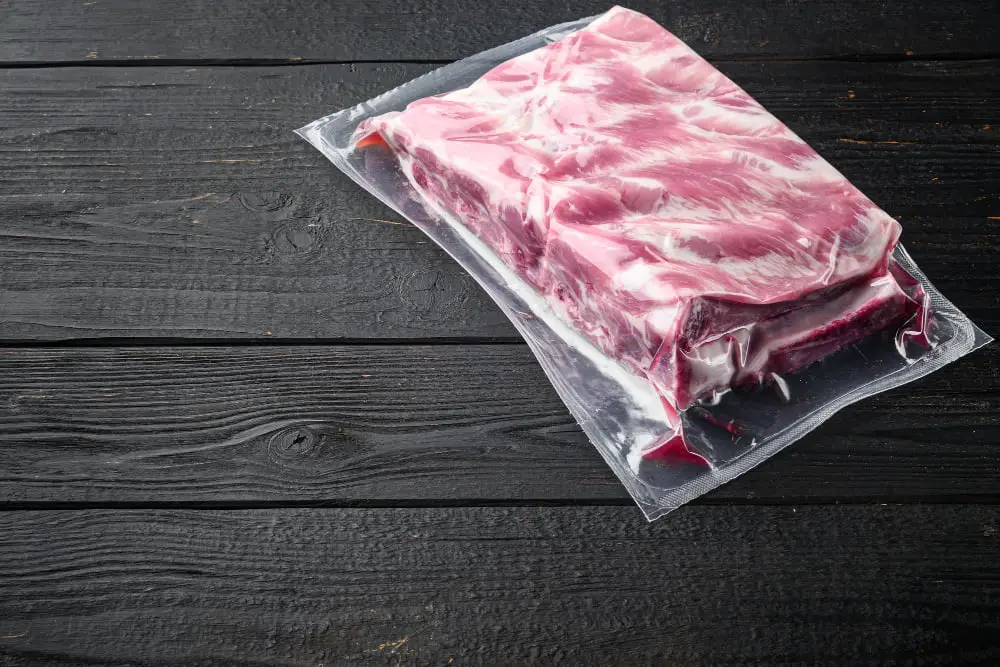
Vacuum sealing enhances the outcome of smoking frozen meats. It does this through several key ways. Firstly, it locks in the flavors and the juices of the meats, thereby amplifying these taste factors during the smoking process. For frozen meat, this retains the original taste which can sometimes be lost due to freezing. Moreover, it preserves the meat and prevents any potential freezer burn, a common issue seen while smoking frozen meats.
Also, vacuum sealing is an effective way to marinate the meat before freezing. The process allows the marinade to penetrate deeply into the meat, which further enhances the flavor when it’s smoked. Lastly, vacuum sealing can keep the meat’s freshness intact, even when stored over extended periods. This means the meat can go straight from the freezer to the smoker without compromising its quality or flavor.
Here are some steps to take into consideration:
- Before vacuum-sealing, let the meat cool slightly to prevent the growth of bacteria.
- If intending to marinate, do so before vacuum sealing. Make sure the marinade is evenly spread across the meat.
- Make sure the vacuum-sealed package is air-tight. Double-check the seal.
- While freezing, lay vacuum-sealed meats flat so they freeze evenly.
- Directly cook or smoke the meat post-freezing. There’s no need to unseal while thawing.
Keep in mind, while vacuum sealing aids the smoking process, it’s only a small part of it. The quality of the meat, the marinade, and the smoking process also significantly contribute to the end product.
Smoking Semi-frozen Meat
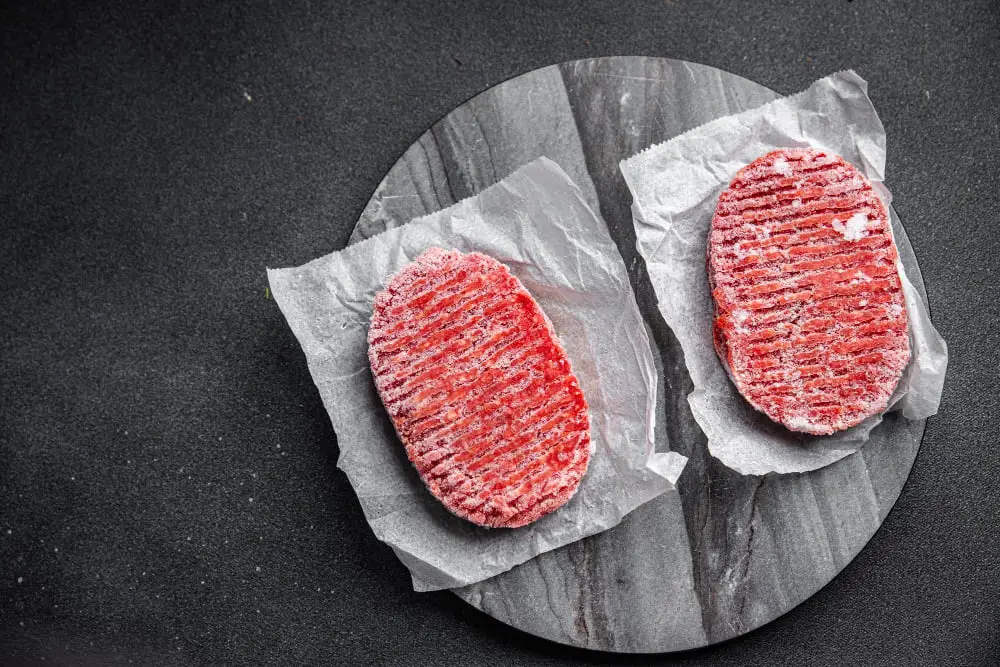
When smoking semi-frozen meat, considerable attention and careful considerations are needed as it is a delicate process.
To begin with, understanding meat temperature is crucial, as semi-frozen meat requires more time to slow smoke due to its lower initial temperature.
Secondly, take into consideration the smoke absorption, as cold meat tends to absorb more smoke giving it a stronger flavor, which can be also a drawback in some cases leading to flavor imbalance.
A vital point to note is that, smoking semi-frozen meat can only happen successfully with indirect heat. The meat should be placed away from the heat source allowing it to cook slowly without burning the outside while the interior is still cold.
Remember to frequently check the internal temperature of the meat. Use a food thermometer to ensure the meat reaches a minimum internal temperature to destroy any harmful bacteria.
Being extra cautious to avoid the danger zone is important. According to the USDA, the danger zone is between 40°F and 140°F, in which bacteria grows quickly. Though smoking semi-frozen meat is a slow process, it should not stay too long in this danger zone.
Lastly, focus on maintaining consistent temperature in the smoker rather than rushing the smoking process. It can take several hours to smoke semi-frozen meat while keeping it moist and flavorful through consistent low temperatures.
To implement these ideas, ensure you have a reliable food thermometer and smoker, be mindful of quantity and intensity of your smoke and continuously monitor the process for optimal results.
Smoking Various Types of Frozen Meats: Turkey, Brisket, Ribs, Pork Shoulder, Sausage
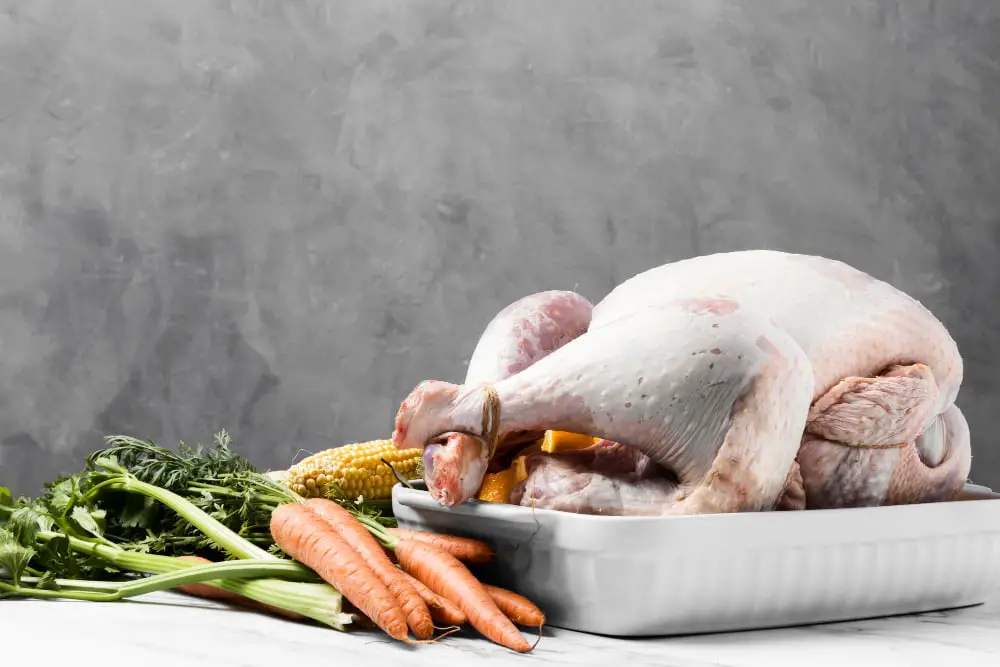
For turkey, smoking frozen meat is an option but it’s crucial to ensure it’s cooked thoroughly to an internal temperature of 165 degrees Fahrenheit. Use a digital meat thermometer to check. The smoking process can take around 6 to 8 hours depending upon the weight of the bird.
Brisket requires a low and slow cooking strategy to break down the tough connective tissues and turn them into gelatin. Even when it’s smoked from frozen, thorough thawing afterwards is a must to attain its signature flavor and texture.
When it comes to ribs, these are smoked at a temperature around 225 degrees Fahrenheit and can take approximately four to five hours to reach tenderness. Freezing doesn’t affect this time dramatically but checking for doneness can be different as ribs are less forgiving when overcooked.
Pork shoulder is another forgiving cut that can go from the freezer to the smoker directly. The smoking process generally lasts 1.5 hours per pound of meat at a consistent 225 degrees Fahrenheit. Make sure to reach an internal temperature of 195 degrees to produce the most tender result.
For sausage, as it is typically already cooked or smoked, people often smoke them again for an additional flavor kick. This process can be done with frozen sausages, just know proper temperature inside must be maintained.
Remember, the key to smoking meat is low and slow. Regardless of the meat being frozen or fresh, ensure the internal temperature reaches safe degrees to avoid risk of foodborne illness.
Preserving Flavor in Smoked Meat Through Freezing
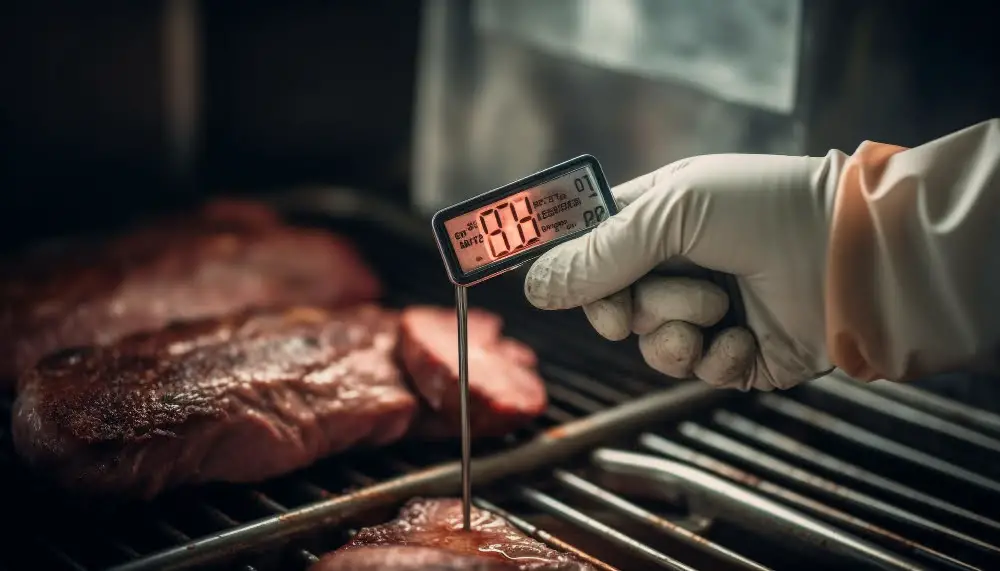
The key to preserving flavor when smoking frozen meat lies in the freezing process itself, the preparation of the meat, and the smoking method. Here are a few fundamental points to consider:
- Always freeze fresh: The fresher the meat when it goes into the freezer, the better the flavor once it is smoked. Meat should be frozen at its peak freshness to ensure that the end result is as flavorful as possible.
- Use proper freezing techniques: Aim for quick freezing and even distribution of coldness to preserve the texture and taste of the meat. Individual, flat freezing rather than freezing larger chunks together can help preserve flavor.
- Invest in vacuum sealing: Vacuum sealing removes all the air around the meat which can prevent freezer burn and better preserve the meat’s original flavor. It’s a worthy investment if smoking meat is a regular practice.
- Prioritize thawing: Depending on the size and type of meat, either a slow thaw in the refrigerator or a quick thaw in cold water is recommended. Thawing ensures even cooking and smoke penetration for maximum flavor.
- Consider a dry rub: Apply a dry rub earlier in the preparation process. This way, the seasoning has time to meld with the meat during the smoking process, intensifying the flavors.
- Choose smoking wood wisely: Different types of wood impart distinct flavors into the meat. Match your choice of wood to the type of meat being smoked.
- Constant temperature for smoking: Maintaining a consistent temperature is crucial for even smoking and to ensure the flavors are properly infused into the meat. Regularly monitoring the temperature throughout the smoking process is key.
FAQ
What happens if I smoke frozen meat?
Smoking frozen meat can lead to a dry end product due to the formation of ice crystals that tear protein fibers when the cellular structure handles extra freezing water.
How do you defrost meat for smoking?
To defrost meat for smoking, submerge it in a bag in a large bowl of cold water and replace the water every 30 minutes until fully thawed.
Can you put frozen meat on Traeger?
Yes, you can place frozen meat on a Traeger grill, cooking it straight from the freezer without requiring a thawing period.
Can you start smoking a frozen brisket?
While it is technically possible to smoke a frozen brisket, it is generally recommended against for optimal results.
What’s the impact of frozen meat on the smoking time?
Frozen meat will extend the smoking time as it must first thaw thoroughly in the smoker before the actual smoking process can begin.
How does the temperature of the smoker affect the outcome of smoking frozen meat?
The temperature of the smoker greatly influences the outcome of smoking frozen meat, as maintaining a consistent low temperature helps to slowly thaw and then gradually cook the meat, ensuring a flavorful, tender, and juicy result.
Is the flavor affected when smoking meat from frozen as opposed to thawed?
Yes, smoking meat from frozen can negatively affect the flavor as the smoke may not penetrate the meat as effectively compared to when it’s thawed.
